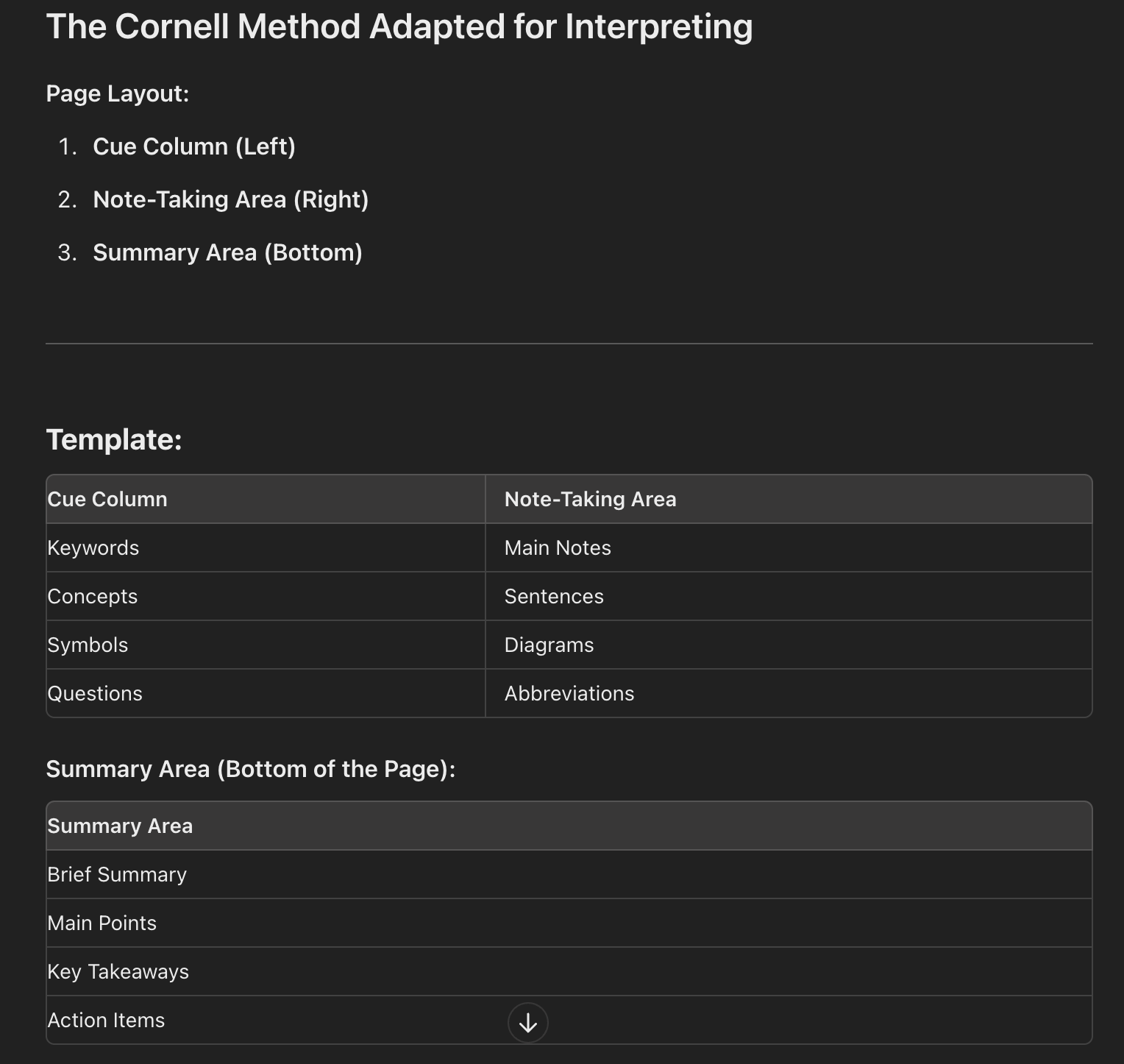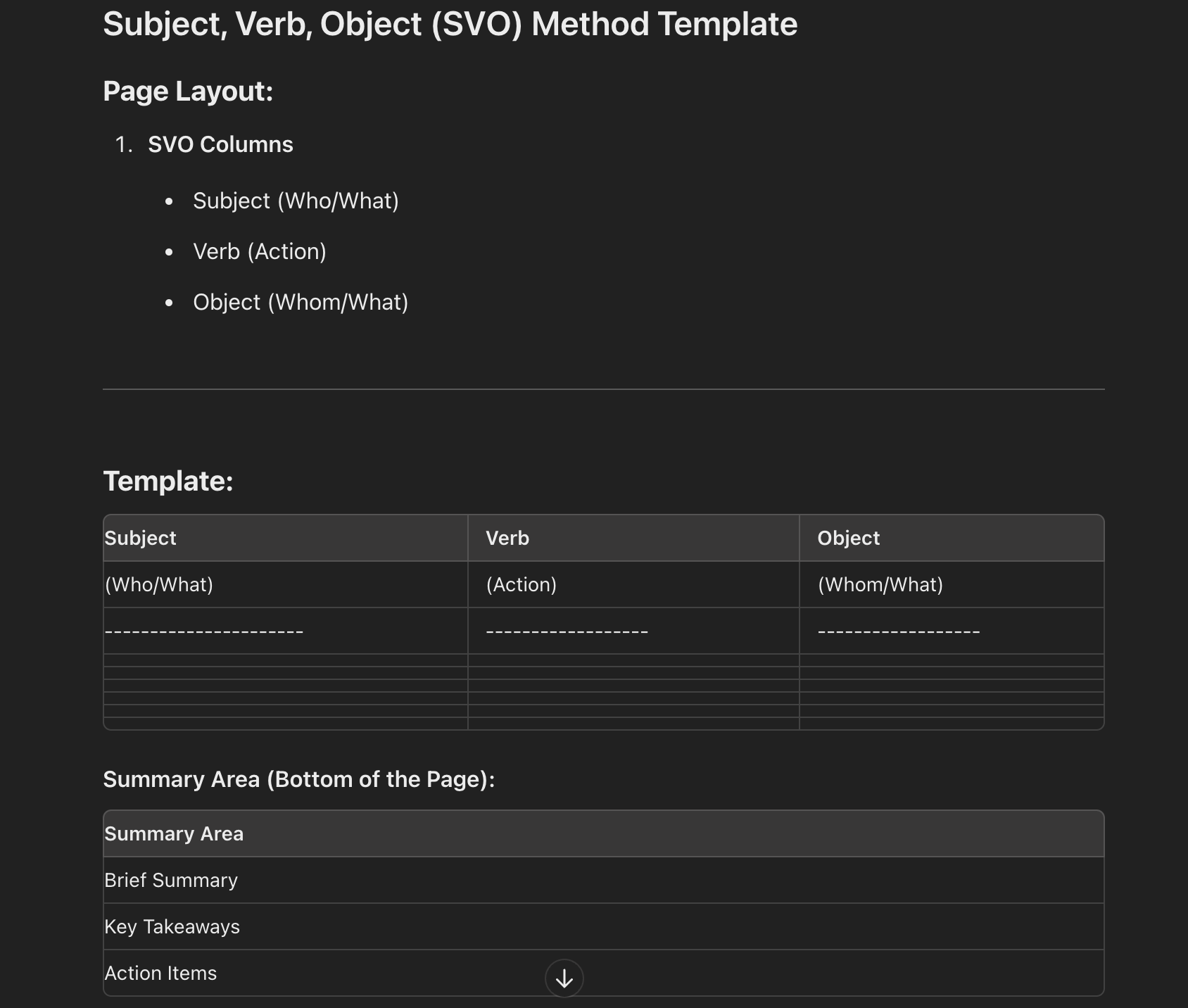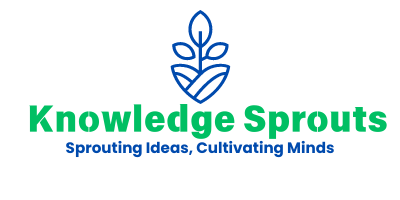Book Appointment Now

Note Taking Skills for Interpreters: Mastering the Art of Note Taking
As an interpreter, your ability to take effective notes can make or break your performance. Capturing information accurately and quickly while maintaining focus is crucial. This skill is often the unsung hero of successful interpretation, bridging the gap between what’s said and what’s conveyed. In this article, we’ll explore the art of note taking skills for interpreters, providing you with the tools and techniques to enhance your skills and overcome common challenges.
- Understanding the Purpose of Interpreter's Notes
- Developing a Personal Note-Taking System
- Essential Note-Taking Techniques for Interpreters
- Language-Specific Considerations
- Tools and Technologies
- Practicing and Improving Note-Taking Skills
- Note Taking in Different Interpreting Settings
- Common Pitfalls and How to Avoid Them
- Ethical Considerations
- Importance of Effective Notetaking for Interpreters
- Conclusion
- Understanding the Purpose of Interpreter's Notes
- Developing a Personal Note-Taking System
- Essential Note-Taking Techniques for Interpreters
- Language-Specific Considerations
- Tools and Technologies
- Practicing and Improving Note-Taking Skills
- Note Taking in Different Interpreting Settings
- Common Pitfalls and How to Avoid Them
- Ethical Considerations
- Importance of Effective Notetaking for Interpreters
- Conclusion
Key Takeaways
- Effective note-taking can cut an interpreter’s stress by up to 40% and helps with memory, logical delivery, and smooth interpreting.
- Use symbols, abbreviations, and creative punctuation to quickly capture key information without losing the speaker’s flow.
- Balance note-taking and memory by writing down main ideas, not every word, and remembering context and non-verbal cues.
- Group main ideas and supporting details using techniques like mind mapping, vertical note-taking, and color coding for better organization.
- Practice regularly to develop a personalized note-taking system that works best for you in high-pressure interpreting situations.
Understanding the Purpose of Interpreter’s Notes
Before diving into techniques, it’s important to understand why we take notes as interpreters. Notes aren’t meant to be a word-for-word record of what’s said. Instead, they serve as memory aids, helping you recall key information, structure, and flow of the original message.
The goal is to strike a balance between listening actively and jotting down essential points. Remember, your primary task is to interpret, not to transcribe.
Fundamental Principles of Effective Note Taking skills for Interpreters
- Selectivity: Focus on capturing the main ideas, key terms, and important details. Don’t try to write down everything you hear. This approach allows you to maintain better focus on the speaker and the overall message.
- Brevity: Use shorthand, symbols, and abbreviations to save time and increase efficiency. The faster you can note things down, the more attention you can give to listening and understanding.
- Clarity: Even under pressure, your notes should be readable. Clear notes help you quickly recall information when it’s time to interpret. If you can’t read your own writing, your notes become useless.

Developing a Personal Note-Taking System
Creating a personalized note-taking system is key to becoming a skilled interpreter. Here are some tips to help you develop your own system:
- Personalized Symbols and Abbreviations: Create a set of symbols and abbreviations for words and phrases that make sense to you. For example, you might use symbols “+” for “and,” “=” for “is,” or “w/” for “with.” The key is consistency and ease of recall.
- Organizing Information Spatially: How you arrange your notes on the page can greatly impact your ability to retrieve information quickly. Consider using different sections of the page for different types of information. For instance, you might reserve the left margin for main topics and the right for supporting details.
- Consistency in Notation Methods: Once you develop a system, stick to it. Consistency will help you write and read your notes more quickly and accurately over time.
Essential Note-Taking Techniques for Interpreters
1. The Cornell Method Adapted for Interpreting
The Cornell Method, originally developed for students, can be adapted for interpreters. Here’s how:
Divide your notepaper into three sections: a narrow-left column, a wide right column, and a bottom section.

Instructions for Use:
- Cue Column (Left Side):
- Use this column to jot down keywords, main concepts, symbols, or questions as you listen. This helps in quickly identifying the main ideas and aids in memory recall.
- Note-Taking Area (Right Side):
- Here, write your main notes during the interpreting session. Focus on capturing essential information using abbreviations, symbols, and shorthand. This section is for the detailed content, including sentences and diagrams.
- Summary Area (Bottom of the Page):
- After the interpreting session, use this space to write a brief summary of the main points covered. This helps reinforce what was discussed and provides a quick reference for future use.
Example:

2. Mind Mapping for Visual Thinkers
Mind mapping is an excellent technique for visual learners. It allows you to represent information graphically, showing relationships between ideas.
Instructions for Use:
Use different colors or shapes to distinguish between different types of information or to highlight key points.
Central Topic:
- Write the main topic (e.g., “Market Trends in Q2”) in the center of the page.2.
Branches:
- Create main branches from the central topic for each key area discussed.
- For each main branch, create sub-branches to capture specific details.
- Use keywords, symbols, and short phrases for quick reference.
Visualization:
- Arrange branches and sub-branches visually to represent relationships and hierarchy.
- Use different colors or shapes to distinguish between different types of information or to highlight key points.
Example:

3. Using the Subject, Verb, Object (SVO) Method
The SVO method focuses on capturing the core elements of each sentence or idea. This approach is particularly useful for languages that follow the Subject-Verb-Object structure.
Explanation of SVO and its Benefits:
- Subject: Who or what is the sentence about?
- Verb: What action is being performed?
- Object: Who or what is receiving the action?
By focusing on these core elements, you can quickly capture the essence of what’s being said without getting bogged down in details.
Instructions for Use:
Subject Column (Left Side):
- Write down the main subject of the sentence, which answers “Who?” or “What?” is performing the action.
Verb Column (Middle):
- Note the action that the subject is performing. This answers “What is the subject doing?”
Object Column (Right Side):
- Capture the object of the action, which answers “Whom?” or “What?” is being acted upon.
Summary Area (Bottom of the Page):
- After the interpreting session, use this space to write a brief summary of the main points. This helps reinforce what was discussed and provides a quick reference for future use.

Examples:
Example 1:
Original sentence: “The United Nations has implemented new policies to address climate change.”
SVO note: UN → implement → climate policies
Example 2:
Original sentence: “Researchers have discovered a new species of bird in the Amazon rainforest.”
SVO note: Researchers → discover → new bird (Amazon)
Example 3:
Original sentence: “The government will increase funding for renewable energy projects next year.”
SVO note: Gov’t → ^ funding → renewable energy (next yr)

Language-Specific Considerations
Different languages have different sentence structures and idiomatic expressions. When interpreting between languages with very different structures (e.g., English and Japanese), you might need to adapt your note-taking style. E.g.:
- For languages with a different word order, you might use arrows to indicate the relationship between words.
- For idiomatic expressions or cultural references, create a special symbol or abbreviation to remind yourself that a direct translation won’t work.
Tools and Technologies
Traditional Tools:
Notepads: Choose a size that’s comfortable for you. Some interpreters prefer smaller pads for portability, while others opt for larger ones for more writing space.
Pens and Pencils: Use what feels most comfortable and allows you to write quickly. Some interpreters prefer mechanical pencils for their consistency and erasability.
Digital Tools:
Tablets: Offer the advantage of searchability and easy organization of notes.
Smart Pens: Can record audio while you write, allowing you to sync your notes with the original speech.
While digital tools offer many benefits, they may not be suitable in all situations due to security concerns or technical limitations. Always have a backup traditional method ready.
I have reviewed 3 of my favorite notes taking applications in my previous blog. Feel free to read.
Practicing and Improving Note-Taking Skills
Exercises to Enhance Speed and Accuracy:
- Practice taking notes while listening to podcasts or watching news broadcasts.
- Try to summarize articles using only your notes.
- Time yourself taking notes and try to improve your speed without sacrificing clarity.
Reviewing and Analyzing Notes:
- After each interpreting session, review your notes.
- Identify areas where you missed important information or where your notes were unclear.
- Look for patterns in your note-taking that you can improve upon.
Continuous Improvement:
- Regularly update your symbol and abbreviation system as you encounter new terms or concepts.
- Seek feedback from colleagues or mentors on your note-taking techniques.
- Stay open to trying new methods and adapting your style as needed.
Note Taking in Different Interpreting Settings
Consecutive Interpreting:
- Focus on capturing main ideas and key details.
- Use a clear structure in your notes to help you recall the flow of the speech.
- Leave space between ideas for any additional information you might recall while interpreting.
Simultaneous Interpreting:
- Note only essential information that’s difficult to remember, like names, numbers, and dates.
- Use very brief symbols or abbreviations that you can glance at quickly.
- Organize your note-taking space efficiently to avoid looking down for extended periods.
Sight Translation:
- Quickly scan the document and make notes on key terms or complex phrases.
- Use arrows or numbers to indicate any necessary changes in word order.
- Mark any cultural references or idioms that may need explanation.
Common Pitfalls and How to Avoid Them
Over-reliance on Notes: Remember, your notes are an aid, not a crutch. Practice interpreting with minimal notes to improve your memory and listening skills.
Illegible Handwriting: If you can’t read your own notes, they’re useless. Practice writing clearly even when rushed.
Missing Key Information: Develop your ability to identify and quickly note down the most important points. Active listening is crucial here.
Losing Focus: If you find yourself getting lost in note-taking, pause and refocus on the speaker. It’s better to have fewer notes and a clear understanding than detailed notes but a confused interpretation.
Ethical Considerations
As an interpreter, you have a responsibility to protect the privacy and confidentiality of your clients. This extends to your notes:
- Never leave your notes unattended during an assignment.
Destroy your notes immediately after the assignment is complete unless otherwise instructed. - If using digital tools, ensure they are password-protected and encrypted.
Never discuss the content of your notes with anyone not directly involved in the interpreting assignment.
Importance of Effective Notetaking for Interpreters
Effective note-taking is a game-changer for interpreters. It’s like having a superpower – you can capture the essence of long speeches in a flash, and deliver them smoothly in another language.
Reduces stress
I’ve been there – sweating bullets, trying to keep up with a fast talker. But once I got my note-taking system down, it was like night and day. Now, I can relax and really listen.
My brain isn’t in overdrive anymore. Plus, when it’s my turn to interpret, I’ve got a guide right in front of me. No more panic attacks! Speaking of guides, let’s talk about how note-taking helps your memory….
Assists short-term memory
Moving from stress reduction, let’s chat about memory boosting. Taking notes is a real lifesaver for your brain’s short-term storage – it’s like giving your mind a helping hand.
Ever tried to remember a long grocery list without writing it down? Yeah, it’s tough. Same goes for interpreting. Writing down key points, symbols, and abbreviations helps your brain focus on the big picture.
You’re not desperately trying to memorize every word. Instead, you’re making a roadmap for your memory to follow. This frees up mental space to process the message’s meaning, not just the words.
Plus, those little scribbles act as triggers, jogging your memory when it’s time to interpret. It’s a win-win – less mental strain, more accurate interpretation. Trust me, your brain (and your clients) will thank you!
Facilitates logical delivery
Short-term memory gets a boost from good notes, and that’s just the start. Logical delivery is the next big win. Picture your notes as a roadmap for your interpretation. They guide you through the speaker’s message, helping you present ideas in a clear, organized way.
Good notes make it easy to follow the flow of thoughts. You’ll spot main points and supporting details at a glance. This means you can deliver the message smoothly, without awkward pauses or backtracking.
It’s like having a cheat sheet for a test… except this test is a real-time conversation! Plus, well-structured notes help you catch those tricky transitions between topics. You’ll sound more natural and confident – as if you’re telling a story rather than just translating words.
Conclusion
Developing strong note-taking skills is a journey that requires practice, patience, and persistence. The techniques and strategies outlined in this article provide a solid foundation, but the key is to find what works best for you.
Experiment with different methods, refine your personal system and continuously seek to improve. Remember, effective notetaking is not about writing everything down, but about capturing the essence of the message in a way that supports your interpretation.
With time and practice, you’ll develop a note-taking style that enhances your skills and contributes to your success as an interpreter.



